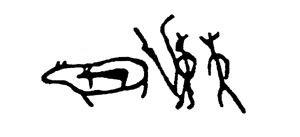Many traditional methods of timekeeping have been used until very recently - only to be instantly forgotten, unrecorded, as soon as they have been replaced by modern clocks and calendars. But it is these traditional methods of telling the time, that give us a clue to interpreting archaeological evidence.
This is a brief introduction and summary of some early time-keeping methods. Links to other articles and information can be found in the side bar.
The Captive Moon
Captive because long before it was known as a planet type body trapped into orbit around the Earth, there were stories about how a girl trapped the Moon into working as a timekeeper to man. In a Chukchi story (collected by Bogoras) from North-East Siberia, the Moon was attracted to a girl, who fortunately had a magic reindeer. The magic reindeer disguised the girl as a lamp by the hearth in the tent. The Moon searched inside for the girl, but could not find her. Just as he was giving up, the girl changed back and taunted him, "Here I am!" she called out, then changed back to a lamp, so the Moon could not find her again. This happened over and over again, until the Moon became very tired. Then the girl grabbed him and would have killed him. Frightened the Moon agreed to stay outside. "I shall be a light for your people if you let me go. I shall indicate the seasons. I shall turn night into day. I shall measure out the year. "But if I let you go, when you are strong you will follow me again.". "Oh, no!" cried the Moon. "I have had enough! I never shall leave my home again!" So she let the Moon go, and since then he has served man as a timekeeper.
Months were usually named after the activities that were carried out at that time of the year. So they are different everywhere. The hardship of late winter is reflected in names like "Month of Last Stored Food", "Hunger Month", "Eating Bootstraps Month". February is named after the Roman god of death.
The cycle of the moon's phases provides a convenient means of counting days. Here is the method that was used in Yakutia (translated from: Ionov: 1913). The month was fixed as 30 days long, and was divided into two halves: the New Half and the Old Half.
The first day of the New Half was called "Closed New". The second day was "Glittering like the eyelash of a maiden". The third day: "The Moon is like (the hem of) a coat". The fourth and fifth days were called "Sharp like the horn of a three-year-old cow". The 6th and 7th days were "Like a piece of the outside of an ancient cross-bow". Then came "Like a far-off neighbour's cooking pot".
The New Half ended on the 15th day with the full moon. The days of the Old Half were numbered backwards back down to one, beginning with the "Beautiful-Flowering-Moon" on the 14th day. Day two "Finished-like-a-lady's-round-earring". The last days of the Old Half were "Hidden".
The Yakuts added an extra month every three years, as the lunar months do not fit the year. Twelve months are too short, thirteen months are too long. Unless the months can be fixed to fit the year the months will soon become out of step with the seasons.
See also: The Moon and Calendars
Shamans and Calendars
Since a reliable calendar was essential for predicting the correct time to commence economic activities - such as hunting or planting, and the appropriate rituals to ensure success, the role of the calendar-keepers - usually shamans or priests, was a powerful one, exercising great control of the rest of the society, who depended upon their accurate predictions. (More on Shamans and Time). Failure led to horrible punishment ending in painful death. The correct time of the year was checked by astronomical observations of the position of the sun, at the winter or summer solstice, in reference to certain fixed points, or by the rising and setting of certain stars like the Pleiades cluster (used by Yakut shamans to update the calendar).
A calendar was an essential part of every home and displayed in the corner where prized and religious objects were kept. The days were marked by holes or by notches, in many ways. Calendars like this were in use into the 19th century, but very few seem to have survived. One type, was a carved staff of six sides, the days of the month notched along the edges.
People used to count and measure things using fingers, hands and arms, and the calendar is no exception. The body calendar was used in Siberia. An Evenk body calendar is given in Tugolukov : 1969. The Yukaghir body calendar was demonstrated to me by Yakutian white shamaness, Rosa Bravina, Professor of Anthropology, Yakutsk University. And the Evenk and Even body calendar is on a Yakutian calendar sent to me for 1994. Starting with summer (June)- Top of Summer, at your finger tips, you count up your right hand - raising joints of fingers, raising back surface of hand, raising wrist, raising elbow, raising shoulder, top of winter - at the neck, then down the left, dropping shoulder, dropping elbow, dropping forearm, dropping back of hand, dropping joints of fingers. It looks like a dance indicating the months.
The Cosmic Hunt
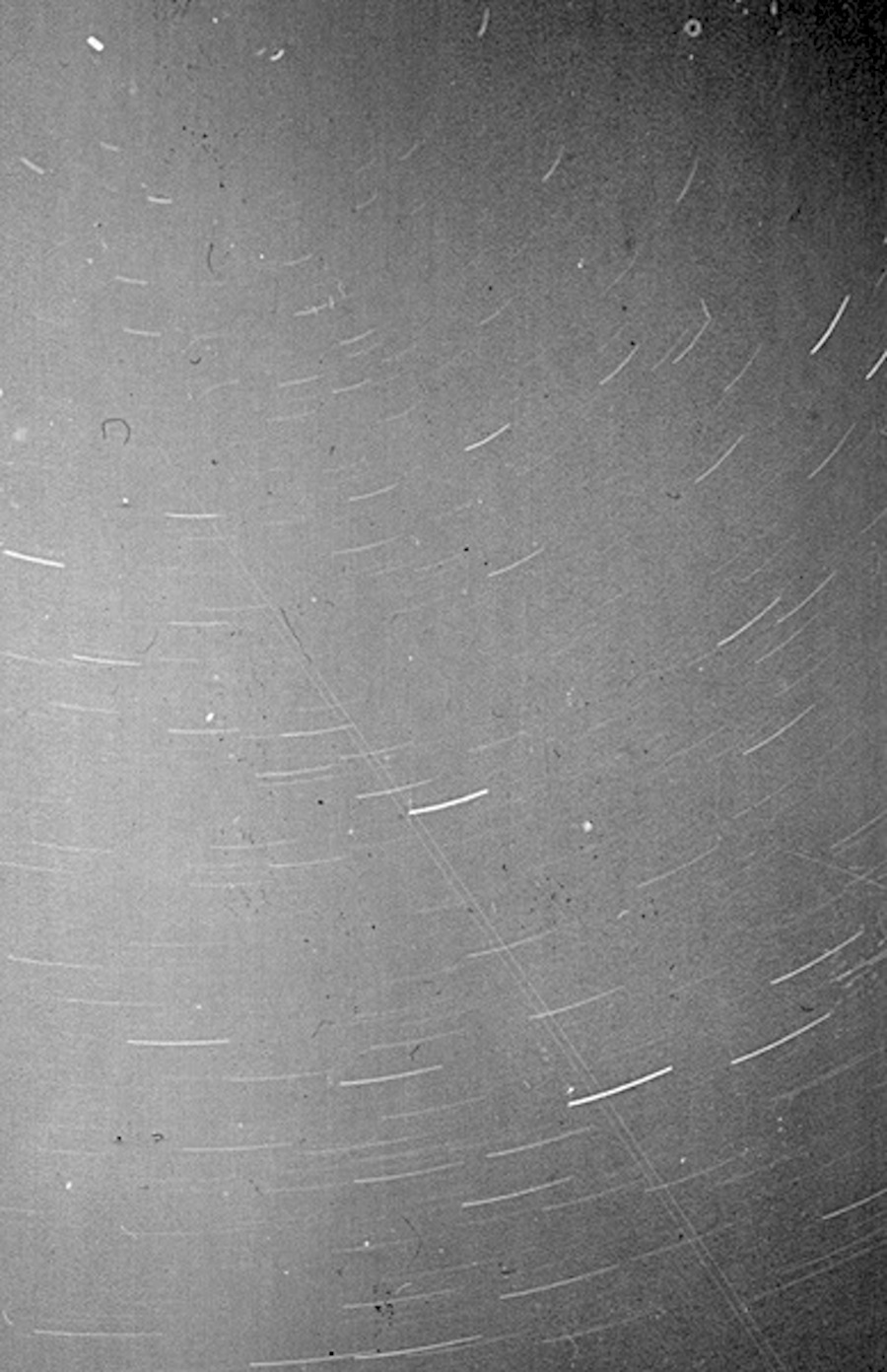 In northern regions, the circumpolar stars visible every night as they appeared to rotate around the north celestial pole, served as a night time clock. Used by reindeer herders to time their night watch. But when I asked an Evenk ethnographer how it was done, he said that no one knew. The main circumpolar constellations forming a triangle around the north pole are Ursa Major, Cassiopeia, and Cygnus the great cross-shaped swan. The Milky Way runs across Cassiopeia and Cygnus. Cygnus has been seen as a swan for a very long time. It dips partly below the horizon - and in legends it is the Swan Prince leading the birds away across the Milky Way each autumn to Bird World, and bringing them back in spring. The migration of birds was one of the ways that the calendar was fixed by the shamans. Cassiopeia was the double-headed eagle that brought ruling powers to man and survives as the imperial emblems used by the Romanovs and the Hapsburgs. The main timekeeper in the sky is Ursa Major, the Great Bear, which appears to rotate about the north celestial pole each night and through the year, making it a clock and a calendar.
In northern regions, the circumpolar stars visible every night as they appeared to rotate around the north celestial pole, served as a night time clock. Used by reindeer herders to time their night watch. But when I asked an Evenk ethnographer how it was done, he said that no one knew. The main circumpolar constellations forming a triangle around the north pole are Ursa Major, Cassiopeia, and Cygnus the great cross-shaped swan. The Milky Way runs across Cassiopeia and Cygnus. Cygnus has been seen as a swan for a very long time. It dips partly below the horizon - and in legends it is the Swan Prince leading the birds away across the Milky Way each autumn to Bird World, and bringing them back in spring. The migration of birds was one of the ways that the calendar was fixed by the shamans. Cassiopeia was the double-headed eagle that brought ruling powers to man and survives as the imperial emblems used by the Romanovs and the Hapsburgs. The main timekeeper in the sky is Ursa Major, the Great Bear, which appears to rotate about the north celestial pole each night and through the year, making it a clock and a calendar.
In Europe and Siberia, this constellation was seen as a mother elk with antlers. Amongst recorded legends are several in which the Cosmic Elk steals the Sun and is chased through the night by a hero/god, or twin heroes, or three hunters, the middle one carrying a cooking pot (the double star). They kill the Elk and the sun rises again. Although the Elk is dead, her daughter (Ursa Minor) survives and the hunt begins again. (Anisimov: 1963). The Cosmic Hunt is illustrated in rock drawings. (Okladnikov: 1972). The skies were mapped not as actually observed but with the mythical beings and events associated with the patterns of stars. Rock drawings of this type in Spain and in Yakutia have been dated to about 6,000 years ago.
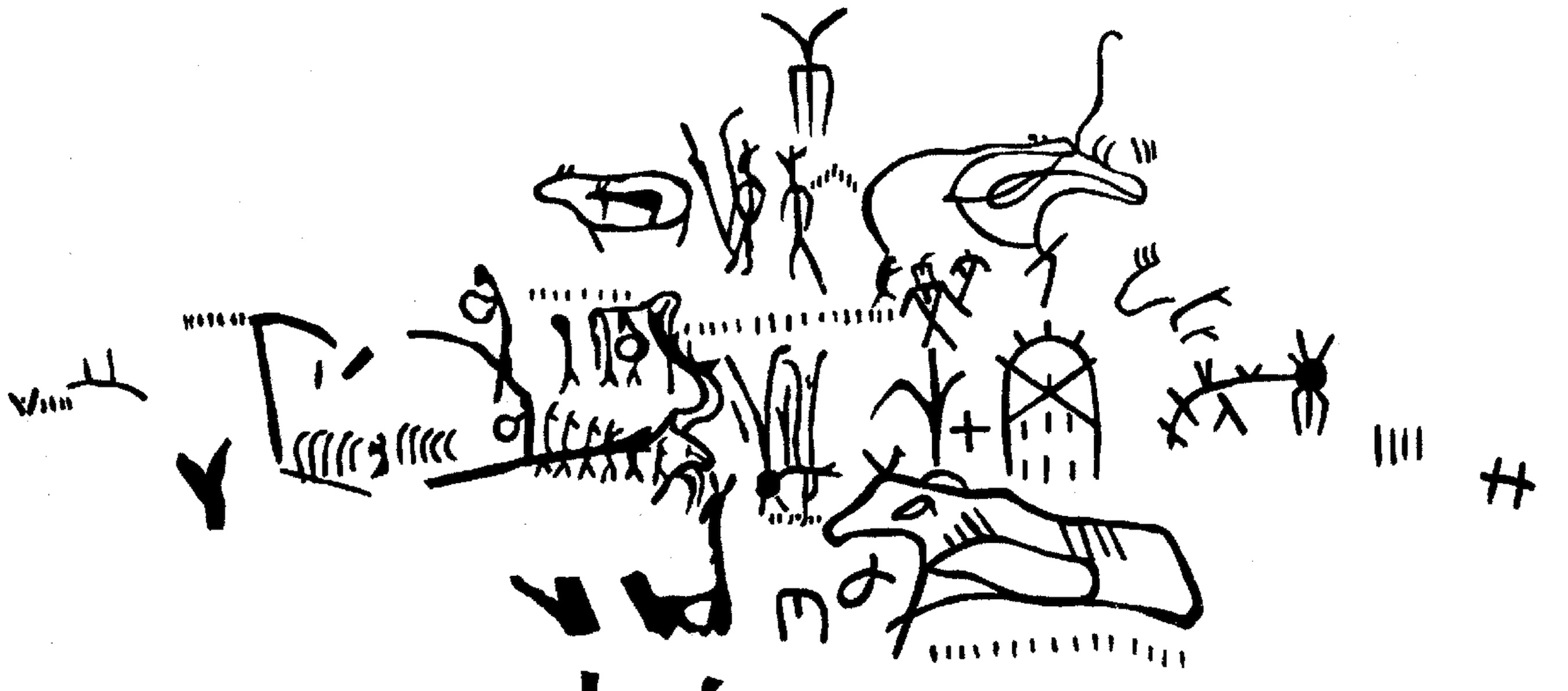
Excavations by a rock drawing of this kind constantly redrawn and maintained as a sacred site, in Yakutia, found offerings dating from the late Neolithic to the 19th century. In Siberia hunters always carried out a spring hunting ritual symbolizing the killing of the Cosmic Elk. In March this constellation is overhead. It has not always been the same, as the Earth wobbles and the north pole moves, in a 26,000 year cycle. Although it is never exactly back to the same place, this is predictable enough to be useful in dating ancient star charts, and even rock drawings and stories about the constellations.
In Canada there are similar stories, but the Ursa Major constellation is a female bear. She is chased throughout the year by three hunters - the middle one with the pot, and in autumn she is killed, her blood stains the leaves. She lies on her back all winter, then in spring her daughter rises and the hunt begins again. (Clark: 1973). Female elk do not have antlers, and surviving Siberian legends, in which the part of female elk or female bear is played by the Great Mammoth Mother, gives a clue to the origins of both elk and bear stories with the mammoth hunters across the steppe tundra of Europe and Siberia, from 55,000 years ago to about 12,000 years ago. (The last mammoths died out about 4,000 years ago). Another clue to the ancient origins of this legend is that the mammoth dips into the sea (and becomes half fish - a walrus or something, symbolically between the upper and lower worlds.). The myth must date from a time and latitude when Ursa Major dipped below the horizon for part of the year, as Cygnus does now.
Directions of the Sun
We can tell the time of day by the position of the sun in the sky or by the direction and length of the shadows it casts. A sundial does this, they take many forms, and are not that easy to make accurately. Sundials are not older than clocks. Unless you want precision they are unnecessary.
Each direction marked by the position of the sun, or its shadow, was an "hour" of the day. For people living near the equator this is very easy. The further from the equator, the greater the differences in the position of the sun each day and the more unequal the hours throughout the year. Until when you get beyond the Arctic Circle, where the Chukchi live, the sun is visible above the horizon all summer, and disappears through the cold, dark winter. The Chukchi had at least twenty-two hours of the day. (Bogoras: 1909). They were not evenly spaced. The greatest number was at dawn. They had Morning Dawn - in which direction their homes faced. But there was also Top-of-the-Dawn, Right-Hand-Dawn, Genuine-Dawn and Left-Hand-Dawn. Dawn was very important for sailors (the Chukchi hunted whales). Sailors could tell from the dawn sky, the winds and weather. In Homer's Odyssey, there is frequent mention of "Rosy-fingered Dawn" and "Golden-throned Dawn". Both not just times but mentioned as goddesses who each get out of bed at the right time, to drive their chariot across the sky.
The Chukchi also saw in each direction of time and space a god to be prayed and sacrificed to living in his own world. Hooper (who was on HMS Plover looking for Franklin), gives an account of the shaman and his wife praying to the "directions" when they were lost in a blizzard. (Hooper: 1853). 20th century recordings of prayers chanted to the Directions, help Hooper's explanation of how it affected him - it is very chilling and the music and song echoes the horrific icy blizzards.
This concept of the significant directions of time and space is found in many cultures - it pervades all cosmological ideas. Each direction was not only a position of time and space, but associated with many other qualities, with winds, elements, colours, people and animals, parts of the body, diseases, etc. The associations of directions of time, space and just about everything else, can be see in cosmology in Europe, Asia, America, Polynesia - all varying according the cultural traditions and the place. For example near the equator, the sun passes overhead, so the directions are different to those in Chukotka. In China these beliefs became very complicated and led to the art of Feng Shui - still popular today. On the practical side, the magnetic compass was developed, two thousand years ago, as an aid to finding the best aspect for new buildings, and it was immediately adapted as a navigational aid. In the original compass the pointer was shaped like the Ursa Major constellation.
The hours and directions used in our own names for days of the weeks survive from the names of the ruling gods for each hour of the day (the day being named after the first hour) as used by the Romans. The Maya in Central America had an even more complicated system of days, hours and auspicious aspects with their own astrological system. No one would embark on an new enterprise without consulting the astronomers.
The concept of the directions and their associated qualities, explains the orientation of ritual sites, tombs and dwellings. Homes usually had the front door to the east, south-east or south. (The word orientate, means facing east). The direction of the rising sun - associated with light, life, and good things. West, North, were associated with death and bad things.
Ancient churches and cathedrals which tended to be built over early ritual sites were orientated so that worshippers faced exactly east, and often this is marked by a round window. The west entrance often has a scene of Doomesday with St.Michael weighing the souls of the dead.
Much the same symbolic orientations are found in the Evenk shaman's tent.
These ideas have very ancient origins. At the Neanderthal-Mousterian site at La Ferrassie in France, dated to about 70,000 years ago, there are graves of humans, of animals and between the two types, many of tiny babies. The graves of the humans are all aligned West to East. (Peyrony: 1934) and have possessions placed with the bodies, little carvings and the remains of food. This indicates possibly that at that time, people were thought to travel to a special place when they died.
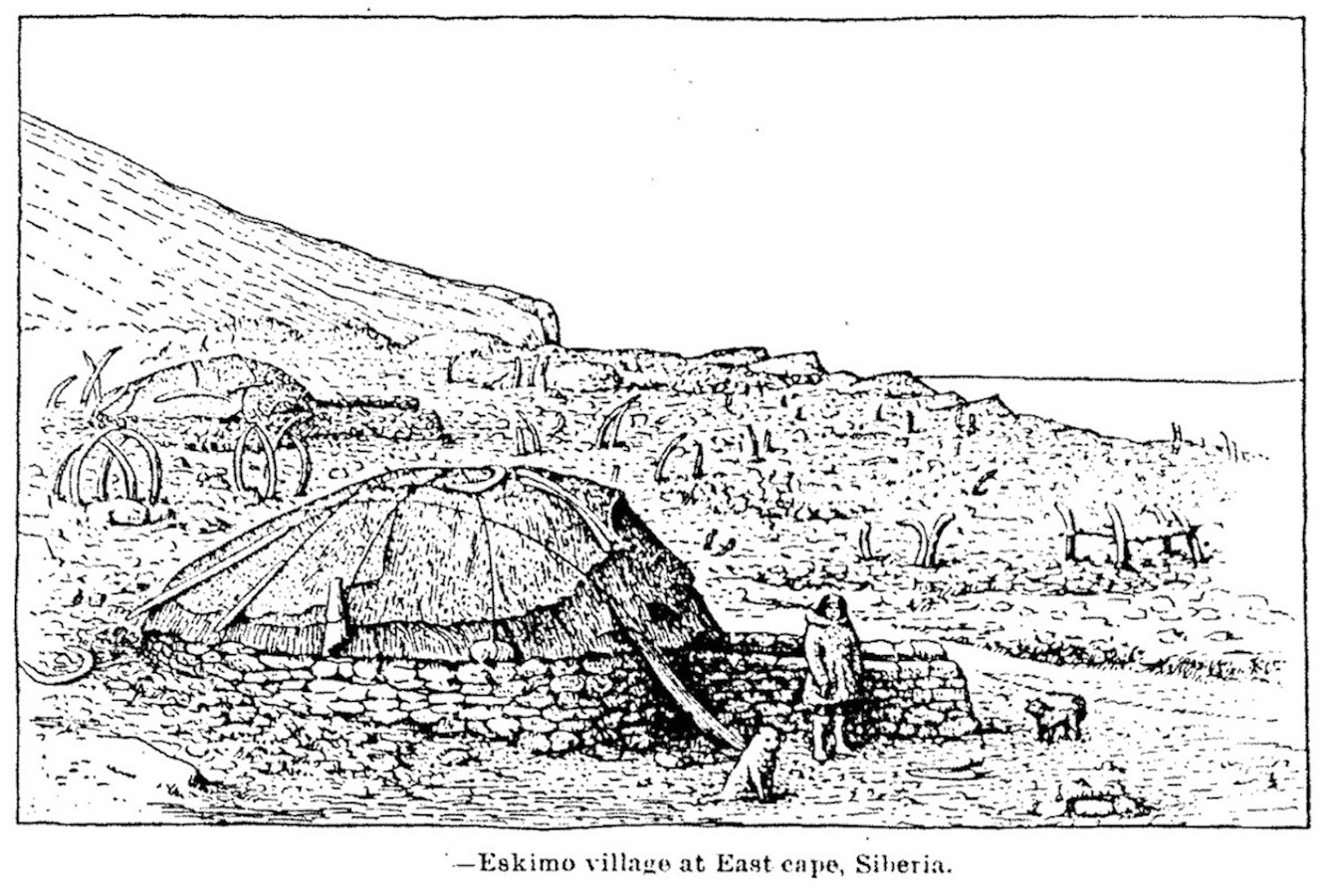 |
See also:
- More on Chukchi directions of time and space
- more on the directions of time and space.
- On the Spring Equinox
- On Stonehenge and the solstices
- On the Moon and calendars(hree parts)
- On the Great Bear and early time keeping and astronomy
- On the legacy in cosmology from the mammoth hunters to the iron age
The Cooking Pot Hour
A day's journey could be anything from less than seven miles to more than 35 miles. It was the most common measure of distance. A much smaller unit to measure distance and other processes to be timed, was the length of time it took to cook something. This depended on the place and what they most usually cooked. To cook potatoes in South America, to brew tea in Central Asia. In North East India, Pakistan etc. the distance travelled in the length of time it took to boil a pot full of water was the KÖSS (KYOSS) (i.e. cooking pot). This was also the measurement of distance in Yakutia. The Yakuts (own name Sakha), came from North East India originally about 1 to 2,000 years ago. In the region around Yakutsk where they arrived some time in the middle ages, the short summers are baking hot, but the long winters can be the coldest in the world. So there was a summer kyoss and a winter kyoss when the ice had to melt first in the pot before it could start to boil. However it was easier to travel in winter, when the ground was frozen. It is very boggy in summer. The Russians tried to standardize this unit of length to 10 versts (six and a half miles) but ended up with a large ten versts and a small ten versts. There was no standard pot size either, as Shklovsky (exiled in the 1890s) discovered when he was told they only had one kyoss and a half to travel. "We journeyed for another hour. All the bushes had vanished and the forest began. We passed the forest and a lake also. I asked again: "How many more kyoss?" "Two," he replied firmly." (Shklovsky: 1916).
In India the cooking pot hour was called a ghati, and was based on the time to cook rice. This basic unit of time was used for the clepsydra - the first type of clock, and thus the hours we use today.
Disposable ancestors and historical records
Early 20th century ethnographers trying to collect the history of a remote region, or even to discover important past events, had difficulties. As recorded in the 1930s in Alaska "In the minds of the oldest people at Kotzebue Sound, the past, so far as their recollections and hearsay are concerned, can be limited simply by the term "a long time ago". Some events which happened two centuries ago were mentioned as if still news, and real people were attributed with superhuman powers. "People used to do things they can't do now".
Beyond living memory, is the Dreamtime - the time of mythology. Boring ancestors are forgotten. Famous heroes get merged with older heroes, even when past years are numbered, named and recorded. Historical records do not survive intact, and may not be readable to future generations. The past is often rewritten and retold. Bias, hype, and politics affects history as much as the present.
One method of keeping track of passing years was in dividing the community into named age groups. The group would be named, as part of the initiation rites turning them into adults. Girls would be married, boys work as warriors, hunters, etc. At middle age - this age group would pass to on to be elders, holding meetings and giving orders to the others. At about sixty they were officially dead, even if still around. Historical events were referred by the name of the generation around then.
Animals had names according to their age, and the years and even the ages of their children were reckoned according to the age of an domestic animal at the time of their birth. The Yukaghir of North-Eastern Siberia, had the custom of naming parents after their children. But they kept a family record of their heritage by making a doll from a bit of a deceased loved one and their clothing. The collections of dolls were passed down from mother to daughter. The spirits of the ancestors they represented were thought to be preserved in the dolls. Dead shamans were cut up and preserved in reliquaries distributed and kept by members of the clan. Thus they could still be called upon in time of need.
It is possible that the collection of skulls, dating to nearly half a million years ago at Zoukoudian, each one trimmed to form a useful bowl, may be such a collection of ancestors. Preserving heads as bowls or cups was even by then an ancient tradition, usually it is a trophy of war or sport- in ancient American ball games, the winners had the head of the captain of the losing team, made into a cup. Thus memories of triumphs are preserved - less noble memories are disposable.
Origins of Cognitive Time Perception
The nearest relatives to humans, the other large primates, are only found in warm, tropical regions. Humans cannot survive for long without clothing and shelter and a source of heat, in temperatures below 20 degrees Celsius. Other mammals of species we associate with tropical regions, lions, elephants, rhinos etc. lived alongside the early humans at cooler latitudes, but they had adapted (unlike humans) with extra warm fur.
Around half a million years ago, in Boxgrove, near Chichester, Sussex; in Diring Yuryakh, by the River Lena, near Yakutsk, and not very far from the Arctic Circle; in Zhoukoudian near Beijing, and other places with freezing winters, (Lincolnshire under mile thick ice most of the time), lived identifiable human ancestors with brains much more developed than any other animal. They sheltered in caves, around continuously maintained hearth fires on which they cooked food (as at Zhoukoudian) and hardened the points of their carved wood spears (two found in Germany) to take with them on the spring hunt for big game by the water holes - (as at Boxgrove and Diring Yuryakh). Both sites had springs near the beaches of wide rivers (Channel was a river then) and similar types and scatter of stone tools. Traces of wooden huts used as summer dwellings from about half a million years ago have been found in France and recently in Japan near Tokyo.
The climate in the last million years has rarely been warmer than today and has normally been much colder. This means that early humans had to adapt to the changing seasons, and had to remember to prepare for the coming winter. Those that did not, did not survive. This must have been instrumental in the development of the human brain and human culture.
Indications for the existence of cognitive time perception may to be found in the evidence for the performance of serial activities such as : - the control and use of fire, the manufacture of tools and other artefacts, storage of food and possessions, language. Humans are the only animals known to use serial data on such a scale. It is possible that this ability originated with the earliest hominids in the use of weapons for extended defence, for which they had to remain upright. Cognitive time perception is essential for the efficient use of weapons.
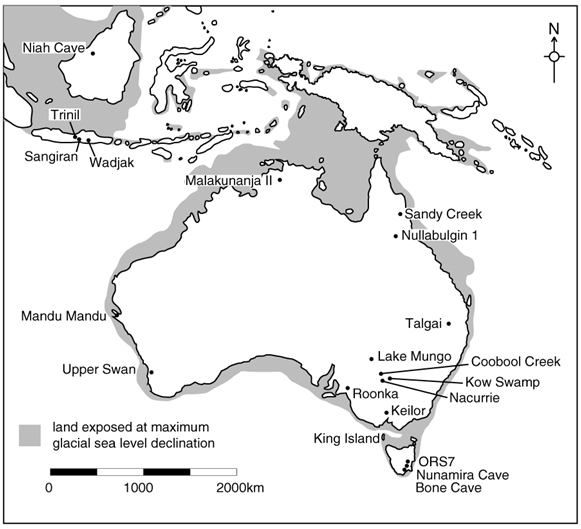
70,000 years ago Australia was already inhabited, and crowded enough to bring about the extinction of many indigenous animals, and change the landscape by burning the trees and scrub.
Even though this was at a time, during an ice-age, when sea levels were lower than today (see diagram), Australia could only be reached by crossing open seas wide enough to be a barrier for animals. These early navigators must have not only had the technology to make safe sea-going boats, (the sea was full of hazards like crocodiles, sharks, jellyfish and dangerous currents). They could have already possessed a means of orientating themselves by the position of stars at night and the sun by day when far from land.
There is evidence that people were able to navigate across open sea much earlier. Some rock carvings found in North East Australia may date to 120,000 years ago. The people who arrived there, had been travelling by boat between islands in Indonesia long before, and had travelled much further along coastlines to reach new lands. They not only would have had the technology to build reliable craft to get them across hazardous seas, but also the ability to judge signs of nearby land. Such as the birds, flocking in the evening to roost for the night, ripplies in the currents, crossing over each other would be coming off land, changes in the colour and appearance of the water, and the seaweeds etc.
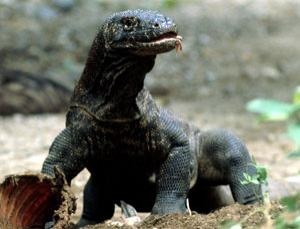
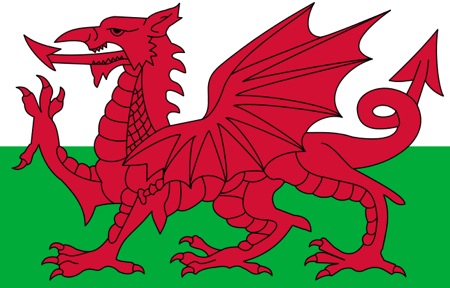 When they did arrive, they faced new dangers in a strange land. New plants and trees, new animals and birds, many very big and very dangerous. There were real dragons spitting venom at you before tearing you apart, and other large beasts. It may be significant that the very large animals became extinct in Australia around 65,000 years ago - although the changing climate may have played a part, as well as the human activities such as killing animals to eat or because they were dangerous, and clearing woodlands by burning them.
When they did arrive, they faced new dangers in a strange land. New plants and trees, new animals and birds, many very big and very dangerous. There were real dragons spitting venom at you before tearing you apart, and other large beasts. It may be significant that the very large animals became extinct in Australia around 65,000 years ago - although the changing climate may have played a part, as well as the human activities such as killing animals to eat or because they were dangerous, and clearing woodlands by burning them.
After reading about the group of convicts from Tasmania - and their cat - who escaped from Tasmania to Chile in a small boat, had suspected that people from Australia travelled by boat not only to the islands around the equator but near the south pole - as the convicts did. Stopping briefly in New Zealand, then continuing to Chile - where they settled, thinking they would be safe. (They did get caught in the end but the cat escaped).
Now genetic tests on some surviving native Americans show a genetic connection to indigeous Australians. Indicating that they had migrated to America thousands of years ago. In fact they were amongst the earliest settlers in America. South America especially. Most of the earliest populations in the North of the American continent had arrived there across the ice in the north, or by boat in summer.
References mentioned in text
